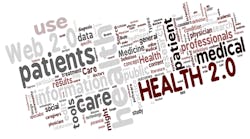The final rules on employment-based wellness programs issued May 29 by the Obama administration support workplace health promotion and prevention as a means to reduce the burden of chronic illness, improve health and limit growth of health care costs. The rules also aim to protect individuals from unfair underwriting practices that could otherwise reduce benefits based on health status.
“Wellness programs have become an increasingly popular component of job-based health coverage,” said Ron Pollack, executive director of Families USA, adding that the final rules “provide a number of essential consumer protections that will limit employers’ ability to use wellness incentives as a subterfuge for discriminating against people with certain health conditions by charging them higher health care costs.”
The final rules http://www.ofr.gov/inspection.aspx continue to support “participatory wellness programs,” which generally are available without regard to an individual’s health status. These include programs that reimburse employees for the cost of membership in a fitness center; that reward employees for attending a monthly, no-cost health education seminar; or that reward employees who complete a health risk assessment, without requiring them to take further action.
The rules also outline standards for nondiscriminatory “health-contingent wellness programs,” which generally reward individuals who meet a specific standard related to their health. Examples of health-contingent wellness programs include programs that provide a reward to those who do not use or decrease their use of tobacco, or programs that reward those who achieve a specified health-related goal, such as a specified cholesterol level, weight or body mass index. The rules also include programs that recognize employees who who fail to meet such goals but take certain other healthy actions.
According to the Department of Health and Human Services, the final rules “ensure flexibility for employers by increasing the maximum reward that may be offered under appropriately designed wellness programs, including outcome-based programs. The final rules also protect consumers by requiring that health-contingent wellness programs be reasonably designed, be uniformly available to all similarly situated individuals and accommodate recommendations made at any time by an individual’s physician based on medical appropriateness.”
“These additional protections are important first steps toward ensuring that consumers are protected within these wellness incentive programs,” said Pollack. “These rules will help ensure that wellness programs are designed to actually promote wellness, and that they are not just used as a backdoor way to shift health care costs to those struggling with health problems.”
The final rules will be effective for plan years beginning on or after Jan. 1, 2014.
Rand Report
According to a report released by the Rand Corp. on May 29 in conjunction with the final rule, half of U.S. employers offer some type of wellness program and larger employers offer “more complex” programs.
According to the Rand report, “Workplace Wellness Programs Study,” programs programs “often include wellness screening activities to identify health risks and interventions to reduce risks and promote healthy lifestyles. Most employers (72 percent of those offering a wellness program) characterize their wellness programs as a combination of screening activities and interventions. Wellness benefits can be offered by employers or a vendor to all employees, or through their group health plans to plan members.”
The report authors note that some 80 percent of employers with a wellness program that participated in the Rand Employer Survey screen their employees for health risks, and use the results for “program planning and evaluation and for directing employees to preventative interventions that address their health risks. Screening activities use health risk assessments (HRA), which are self-administered questionnaires on health-related behaviors (such as exercise) and risk factors (e.g., smoking, body weight, etc.) and may include clinical screenings to collect biometric data such as height, weight, blood pressure and blood glucose levels.
“Over the last several decades, an epidemic of ‘lifestyle diseases’ has developed in the United States,” noted the Rand report authors. “Unhealthy lifestyles, such as inactivity, poor nutrition, tobacco use and frequent alcohol consumption, are driving up the prevalence of chronic disease, such as diabetes, heart disease and chronic pulmonary conditions. These chronic conditions have become a major burden, as they lead to decreased quality of life, premature death and disability and increased health care cost.”
They noted that although chronic disease was once categorized as a problem for older people, there has been a shift toward earlier onset, which impacts the working population. This “adds to the economic burden, because of illness-related loss of productivity due to absence from work (absenteeism) and reduced performance while at work (presenteeism).”
The report authors noted that workplace wellness programs “take advantage of employers’ access to employees at an age when interventions can still change their long-term health trajectory. The Patient Protection and Affordable Care Act (Affordable Care Act) supports this trend with several provisions regarding health promotion.”
